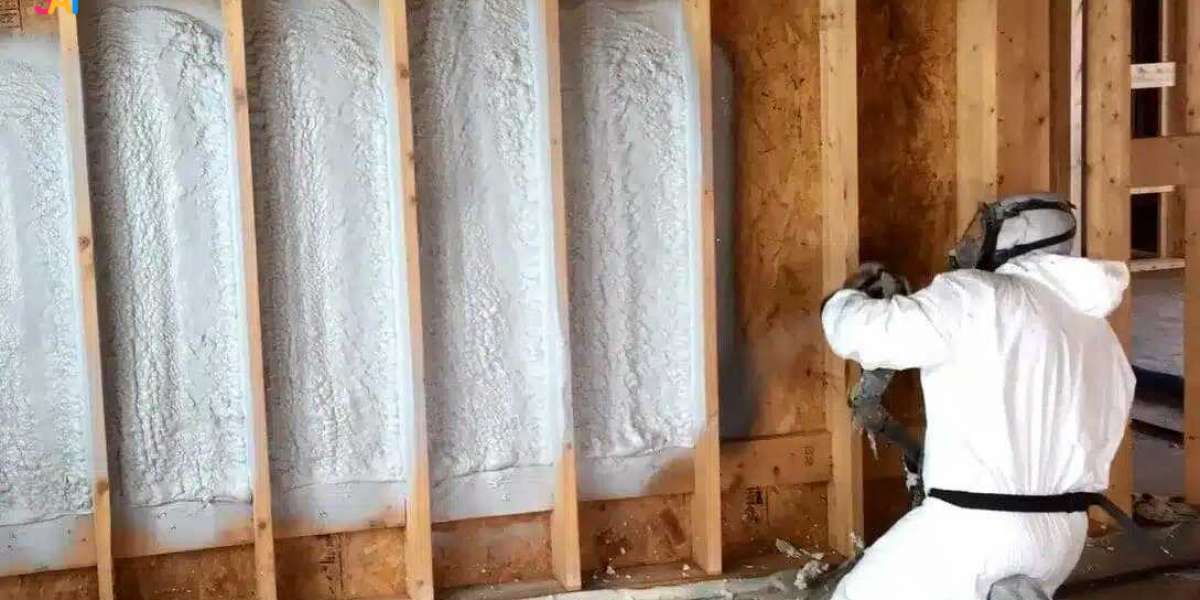Closed-cell spray foam insulation provides a dense, moisture-resistant barrier that performs exceptionally well in extreme weather. Its rigid structure delivers high thermal resistance and strong structural support, making it an ideal choice for buildings in areas with harsh temperatures, high winds, or frequent storms.
This article explains the benefits of closed-cell spray foam insulation in extreme climates conditions, with technical data, real-world performance metrics, and selection insights to help readers evaluate if it's the right solution.
What Sets Closed-Cell Foam Apart in Harsh Climates
Closed-cell foam offers a unique combination of thermal, moisture, and structural performance that outmatches most traditional insulation types in severe weather.
Key performance advantages:
- Low permeability slows down moisture penetration
- High R-value per inch reduces heat transfer
- Rigid density reinforces wall and roof assemblies
- Performs well across a wide range of temperatures (hot or cold)
Technical Performance Data
Property | Closed-Cell Spray Foam |
|---|---|
R-Value (per inch) | 6.0–7.5 |
Water Vapor Permeance | ≤ 1 perm (at 1.5” thickness) |
Air Barrier Effectiveness | Achieved at 1” thickness |
Compressive Strength | 25–35 psi |
Expansion Ratio | 30–50 times original volume |
Application Temperature | -10°F to 120°F (varies by product) |
Performance Comparison in Extreme Conditions
Feature | Closed-Cell Foam | Fiberglass | Open-Cell Foam | Rigid Foam Board |
|---|---|---|---|---|
Moisture Resistance | Excellent | Poor | Low | Moderate |
Wind Uplift Resistance | High | Low | Low | Moderate |
Structural Strength | High | None | Low | Moderate |
Cold Climate Performance | Excellent | Moderate | Poor | Moderate |
High Humidity Performance | Excellent | Poor | Low | Moderate |
How Closed-Cell Foam Helps in Hot and Cold Extremes
Cold Climates
Closed-cell foam limits air leaks and moisture buildup that contribute to frost and ice damming. Its high R-value per inch allows for thermal performance in narrow wall cavities, common in older buildings. It also adds rigidity to reduce shifting caused by freeze-thaw cycles.
Bonus Tip: In cold climates, closed-cell foam applied to rim joists and wall junctions helps eliminate major thermal bridges.
Hot Climates
In heat-heavy regions, radiant energy and humidity can raise indoor loads significantly. Closed-cell foam forms a vapor-resistant envelope and blocks convective heat transfer through roof decks and exterior walls.
Bonus Tip: Applying foam to the underside of roof decks in hot climates can reduce attic temperatures by 20–30°F.
Storm Resistance and Flood Readiness
Closed-cell foam is the only spray foam insulation type recognized by FEMA as flood-damage resistant (Class 5). It can withstand temporary submersion and does not absorb bulk water like cellulose or fiberglass.
In storm zones, it helps:
- Reinforce sheathing and studs
- Reduce wall racking under pressure
- Prevent mold growth after water intrusion
Bonus Tip: Closed-cell foam applied to underside of elevated floors in coastal zones increases flood resilience and storm durability.
Energy Savings Over Time
Buildings with closed-cell foam typically see 30–50% better thermal performance than traditional insulation under extreme temperature swings. Real estate and energy studies in the U.S. show:
- In Texas and Florida, homes insulated with closed-cell foam reduced annual HVAC loads by up to 40%.
- A DOE analysis found that foam-sealed envelopes retained 96% of their original performance after 10 years.
Things to Consider Before Making a Decision
Before selecting closed-cell foam, review:
- Wall cavity depth: Closed-cell foam’s high R-value works well in tight spaces, but thick applications can be expensive.
- Moisture sources: It seals out ambient humidity but doesn’t resolve internal moisture sources (e.g., roof leaks).
- Code compliance: Some localities require ignition barriers over foam in accessible areas.
- Budget scope: Closed-cell foam costs more upfront but delivers stronger long-term savings and protection.
Common Questions
Is closed-cell foam safe for cold storage or refrigerated spaces?
Yes. Its low vapor permeability and high thermal resistance make it suitable for cold storage, walk-in coolers, and freezer walls.
Can it be used in existing walls?
Yes, but installation requires open access. Retrofit projects often use drilled-hole access or partial tear-outs for injection.
What surfaces can it be applied to?
Closed-cell foam adheres to wood, metal, masonry, and some plastics when prepared properly. Surface temperature and moisture must be controlled.
Will it shrink or degrade?
When installed correctly, it remains stable for decades. Compression or improper mix ratios can cause defects, but those are preventable.
Closed-Cell Foam FAQ
How does closed-cell foam differ from open-cell foam?
Closed-cell foam is denser, has a higher R-value, and is more moisture-resistant than open-cell. It provides structural support and functions as a vapor barrier.
Can it be used in combination with other insulation types?
Yes. Hybrid systems often use foam in exterior walls and batts in interior partitions to manage costs.
How thick should it be applied?
It depends on climate zone and application. Roof decks may need 3–4 inches. Walls often need 2 inches to meet code.
Is it environmentally friendly?
Modern formulations use low-GWP blowing agents. It reduces energy use long-term, though manufacturing has a higher carbon footprint than batt insulation.
What are the limits of closed-cell foam?
It can be rigid and harder to trim, doesn’t allow drying through the wall, and is more expensive than other options.
Make the Right Decision
A closed-cell spray foam insulation contractor offers unmatched protection against heat, cold, wind, and moisture. Its structural strength and energy efficiency make it an ideal choice for extreme weather zones.
Before deciding, check your wall depths, code requirements, and building use. Long-term savings, comfort, and durability often outweigh the initial cost.
Reviewer: Maria Lopez reviewed the article and brought 12 years of insulation industry experience to improve the guidance. Practical tips were added, and the content was made clearer and more useful for contractors working in the field every day.






